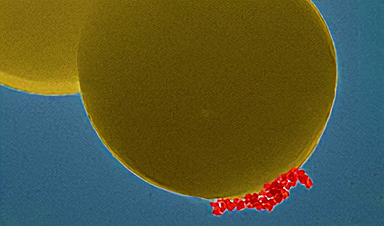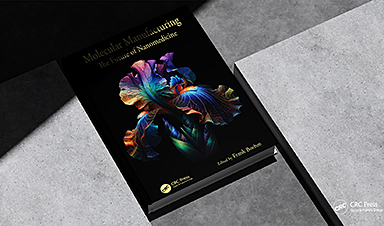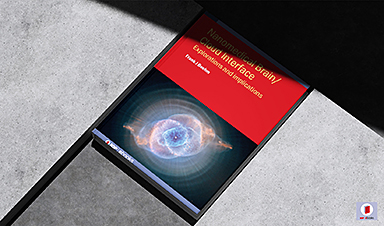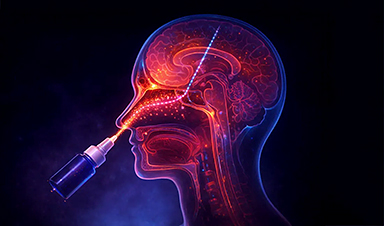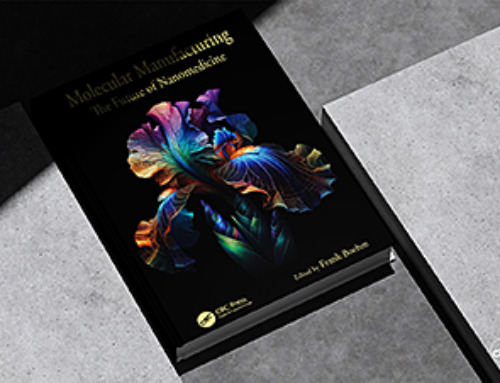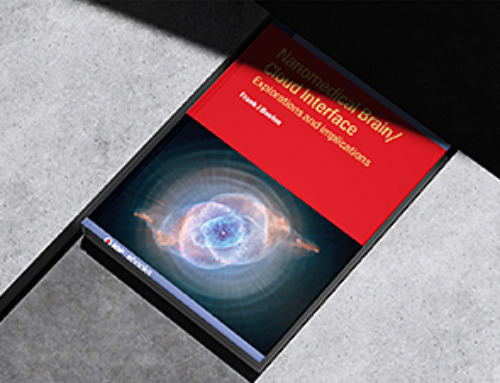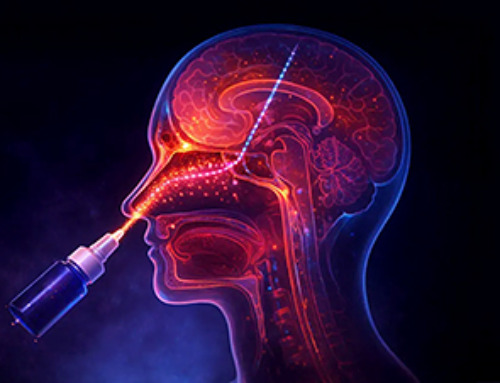Qun Ren, an Empa researcher, and her team are currently developing a diagnostic procedure that can rapidly detect life-threatening blood poisoning caused by staphylococcus bacteria.
This is particularly crucial for the survival chances of those affected, as Staphylococcus aureus strains can be insensitive to various antibiotics. “If the bacteria in a blood sample first have to be cultivated for a diagnostic procedure, valuable time is lost,” explains Qun Ren, the group leader from Empa’s Biointerfaces lab in St. Gallen. Qun Ren and her team colleague Fei Pan therefore looked together with researchers from ETH Zurich for a way to bypass the lengthy intermediate step.
The team has developed a method using magnetic nanoparticles that can bind to staphylococci. The bacteria can thus be specifically detected via a magnetic field. In a next step, the sensitivity to antibiotics is analyzed using a chemiluminescence method. If resistant bacteria are in the test tube, the sample emits light. If, on the other hand, the germs can be killed with antibiotics, the reaction vessel remains dark. “All in all, the sepsis test takes around three hours—compared to several days for a classic cultivation of bacterial cultures,” says Fei Pan.
Another unpleasant representative from the bacterial kingdom is Pseudomonas aeruginosa. This rod-shaped bacterium can cause various diseases, including infections of the urinary tract, for example, via a urinary catheter during a hospital stay. Such infections can subsequently develop into sepsis. And these pathogens are also often resistant to a number of antibiotics.
This is where another advantage of the magnetic nanoparticles comes into play: The method can be tailored to many different types of bacteria, similar to a modular system. In this way, Empa researchers were able to develop a rapid “sepsis sensor” based on magnetic nanoparticles. In samples containing artificial urine, the method reliably identified the bacterial species and determined possible resistance to antibiotics via a chemiluminescence reaction.
So far, the researchers have evaluated their magnetic nanoparticle kit for sepsis and urinary tract infections using laboratory samples. “In a next step, we would like to validate the sepsis tests together with our clinical partners by evaluating patient samples,” says Qun Ren.
The research is published in the journals ACS Sensors and Biosensors and Bioelectronics.
Worldwide, the declining effectiveness of antibiotics causes more than one million deaths each year. For example, some staphylococci can no longer be controlled with common antibiotics because they have developed resistance. The proportion of multi-resistant pathogens is particularly worrying. Already, the worldwide antibiotic resistance of pathogens is being described as a “silent pandemic.” When diagnosing an infection, the speed and precision, with which a germ is identified, can be critical for the survival of those infected.
News
Molecular Manufacturing: The Future of Nanomedicine – New book from Frank Boehm
This book explores the revolutionary potential of atomically precise manufacturing technologies to transform global healthcare, as well as practically every other sector across society. This forward-thinking volume examines how envisaged Factory@Home systems might enable the cost-effective [...]
New Book! NanoMedical Brain/Cloud Interface – Explorations and Implications
New book from Frank Boehm, NanoappsMedical Inc Founder: This book explores the future hypothetical possibility that the cerebral cortex of the human brain might be seamlessly, safely, and securely connected with the Cloud via [...]
Global Health Care Equivalency in the Age of Nanotechnology, Nanomedicine and Artificial Intelligence
A new book by Frank Boehm, NanoappsMedical Inc. Founder. This groundbreaking volume explores the vision of a Global Health Care Equivalency (GHCE) system powered by artificial intelligence and quantum computing technologies, operating on secure [...]
Miller School Researchers Pioneer Nanovanilloid-Based Brain Cooling for Traumatic Injury
A multidisciplinary team at the University of Miami Miller School of Medicine has developed a breakthrough nanodrug platform that may prove beneficial for rapid, targeted therapeutic hypothermia after traumatic brain injury (TBI). Their work, published in ACS [...]
COVID-19 still claims more than 100,000 US lives each year
Centers for Disease Control and Prevention researchers report national estimates of 43.6 million COVID-19-associated illnesses and 101,300 deaths in the US during October 2022 to September 2023, plus 33.0 million illnesses and 100,800 deaths [...]
Nanomedicine in 2026: Experts Predict the Year Ahead
Progress in nanomedicine is almost as fast as the science is small. Over the last year, we've seen an abundance of headlines covering medical R&D at the nanoscale: polymer-coated nanoparticles targeting ovarian cancer, Albumin recruiting nanoparticles for [...]
Lipid nanoparticles could unlock access for millions of autoimmune patients
Capstan Therapeutics scientists demonstrate that lipid nanoparticles can engineer CAR T cells within the body without laboratory cell manufacturing and ex vivo expansion. The method using targeted lipid nanoparticles (tLNPs) is designed to deliver [...]
The Brain’s Strange Way of Computing Could Explain Consciousness
Consciousness may emerge not from code, but from the way living brains physically compute. Discussions about consciousness often stall between two deeply rooted viewpoints. One is computational functionalism, which holds that cognition can be [...]
First breathing ‘lung-on-chip’ developed using genetically identical cells
Researchers at the Francis Crick Institute and AlveoliX have developed the first human lung-on-chip model using stem cells taken from only one person. These chips simulate breathing motions and lung disease in an individual, [...]
Cell Membranes May Act Like Tiny Power Generators
Living cells may generate electricity through the natural motion of their membranes. These fast electrical signals could play a role in how cells communicate and sense their surroundings. Scientists have proposed a new theoretical [...]
This Viral RNA Structure Could Lead to a Universal Antiviral Drug
Researchers identify a shared RNA-protein interaction that could lead to broad-spectrum antiviral treatments for enteroviruses. A new study from the University of Maryland, Baltimore County (UMBC), published in Nature Communications, explains how enteroviruses begin reproducing [...]
New study suggests a way to rejuvenate the immune system
Stimulating the liver to produce some of the signals of the thymus can reverse age-related declines in T-cell populations and enhance response to vaccination. As people age, their immune system function declines. T cell [...]
Nerve Damage Can Disrupt Immunity Across the Entire Body
A single nerve injury can quietly reshape the immune system across the entire body. Preclinical research from McGill University suggests that nerve injuries may lead to long-lasting changes in the immune system, and these [...]
Fake Science Is Growing Faster Than Legitimate Research, New Study Warns
New research reveals organized networks linking paper mills, intermediaries, and compromised academic journals Organized scientific fraud is becoming increasingly common, ranging from fabricated research to the buying and selling of authorship and citations, according [...]
Scientists Unlock a New Way to Hear the Brain’s Hidden Language
Scientists can finally hear the brain’s quietest messages—unlocking the hidden code behind how neurons think, decide, and remember. Scientists have created a new protein that can capture the incoming chemical signals received by brain [...]
Does being infected or vaccinated first influence COVID-19 immunity?
A new study analyzing the immune response to COVID-19 in a Catalan cohort of health workers sheds light on an important question: does it matter whether a person was first infected or first vaccinated? [...]
